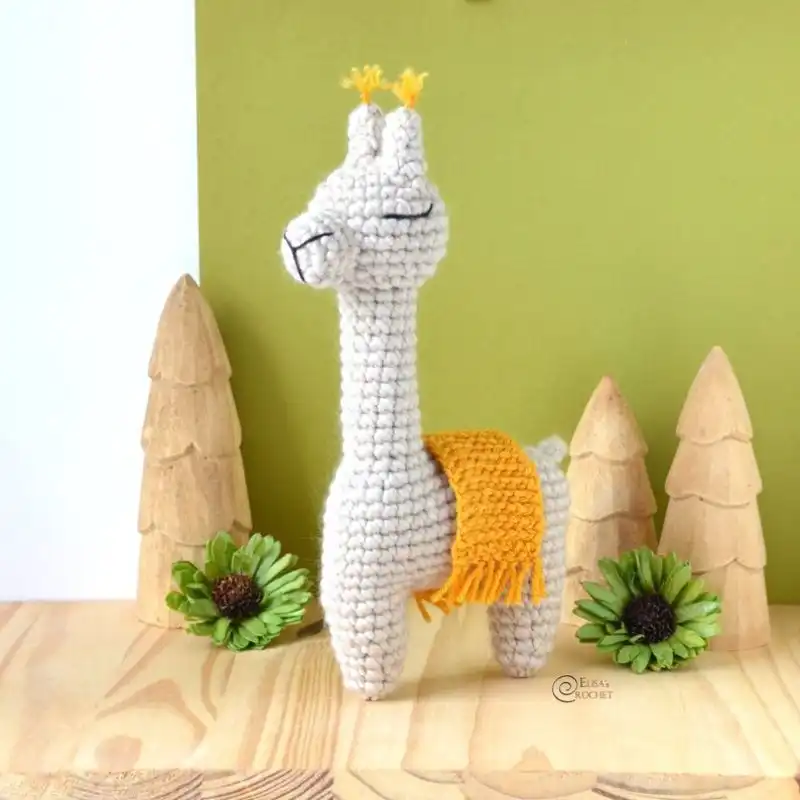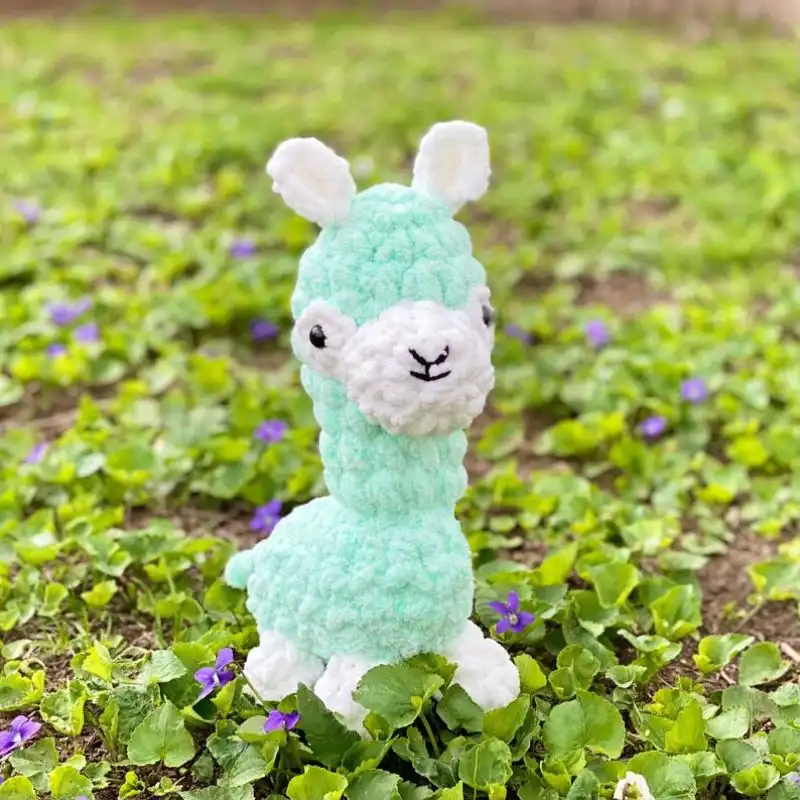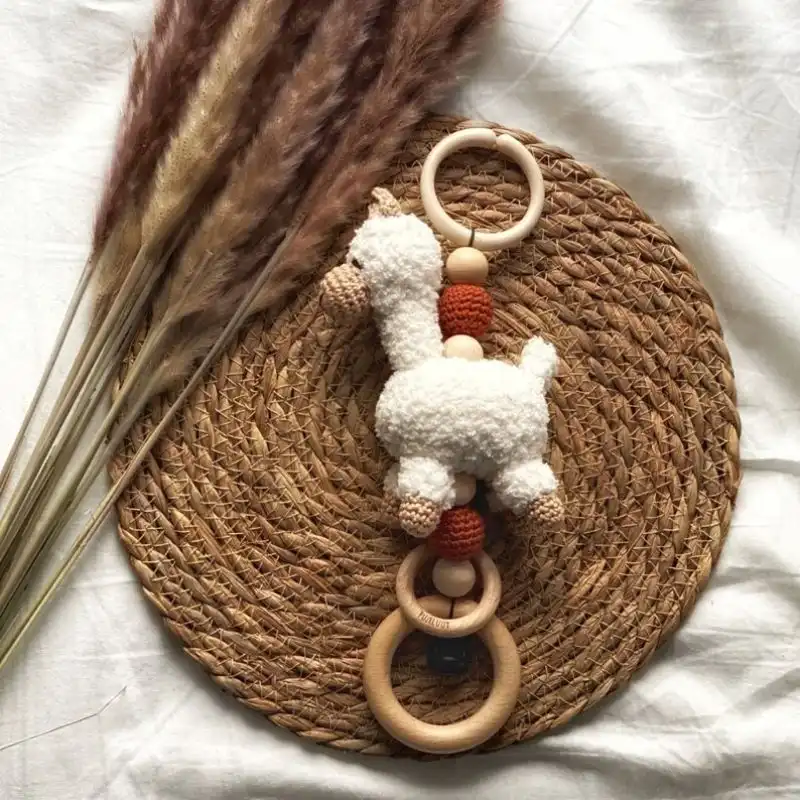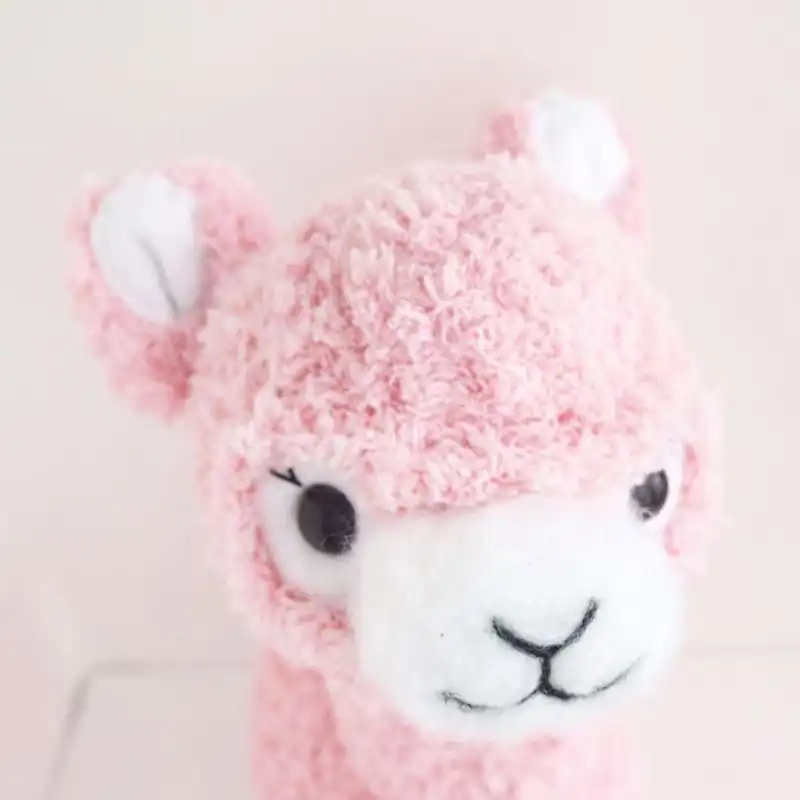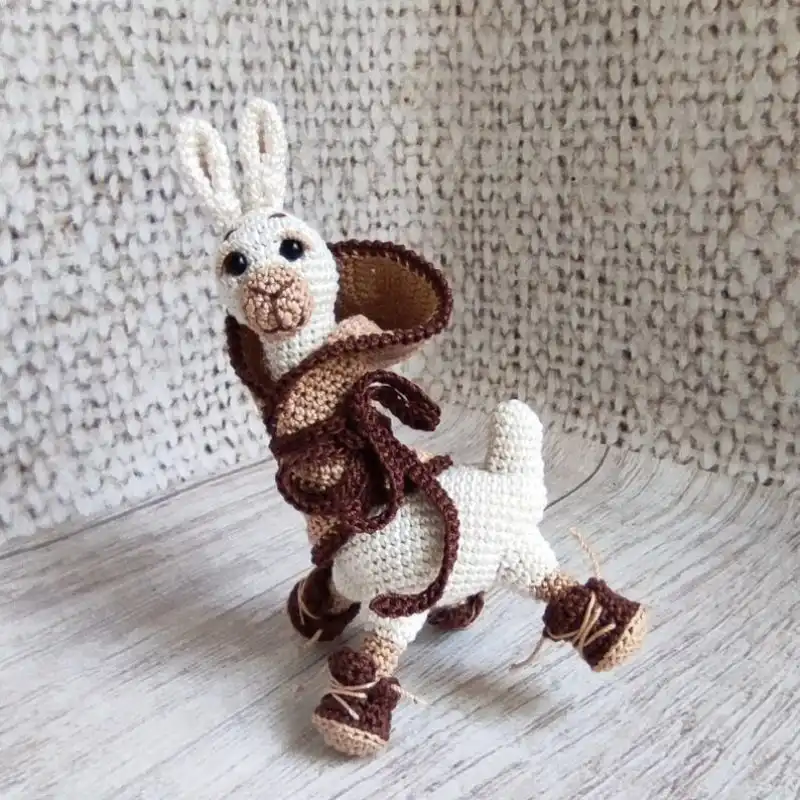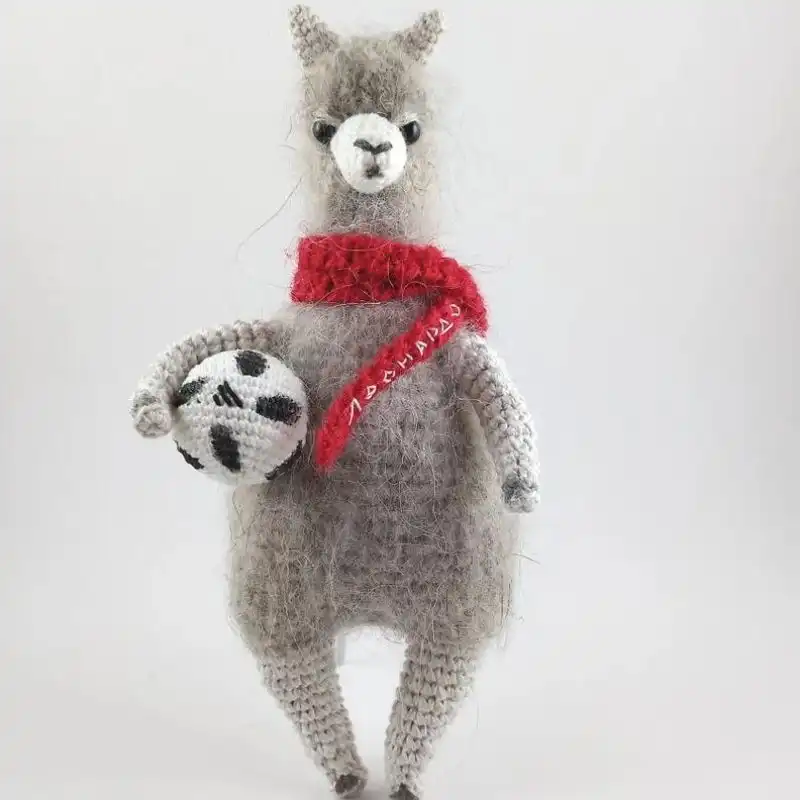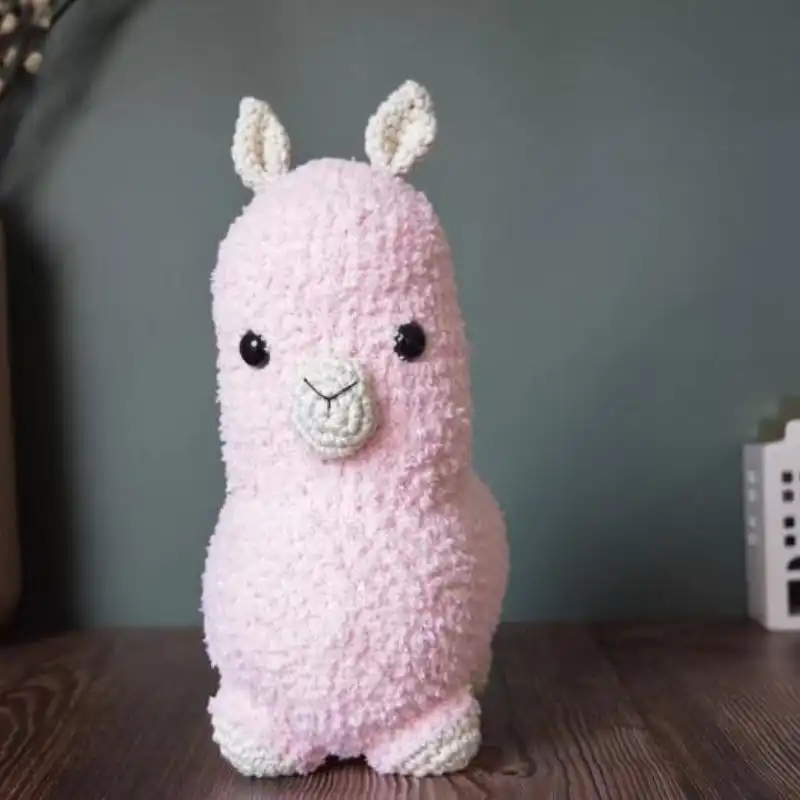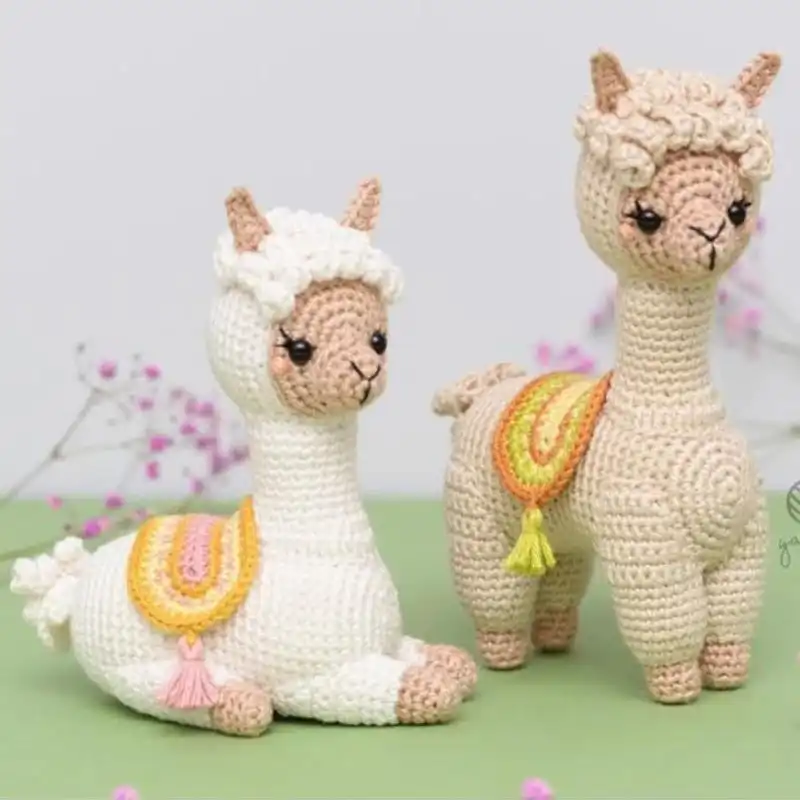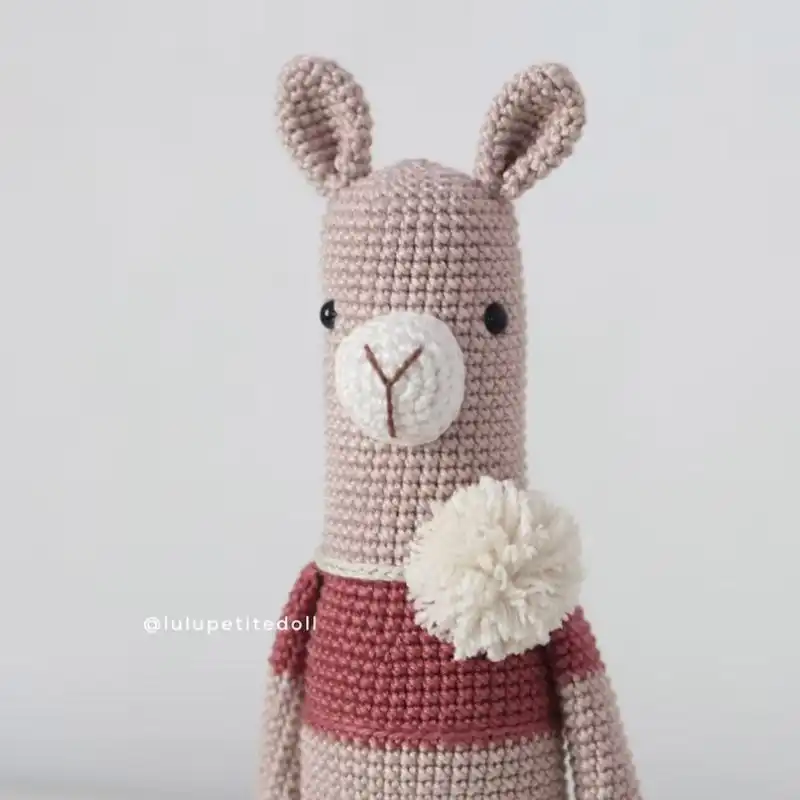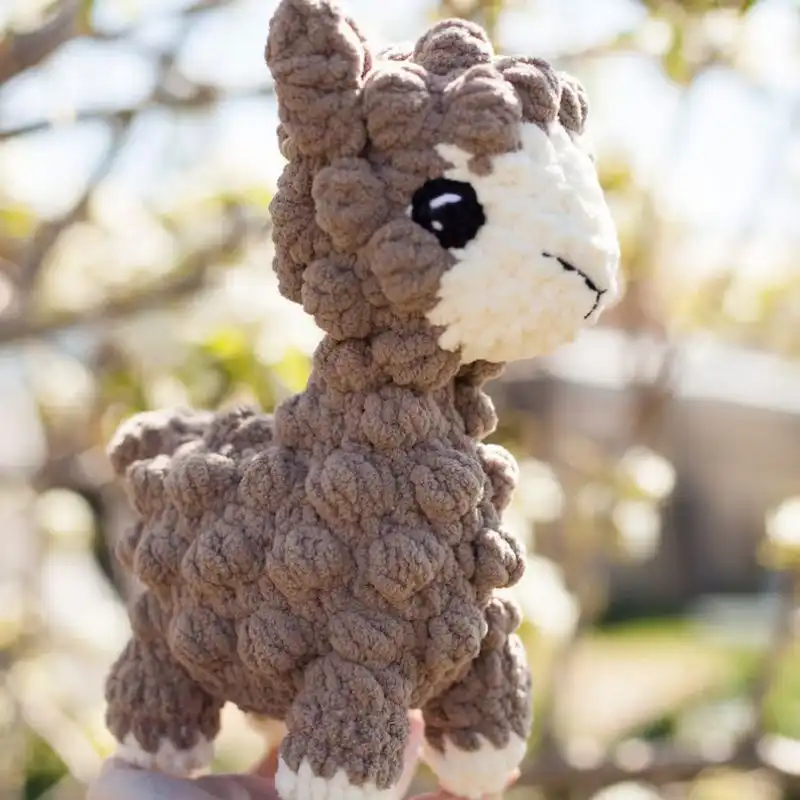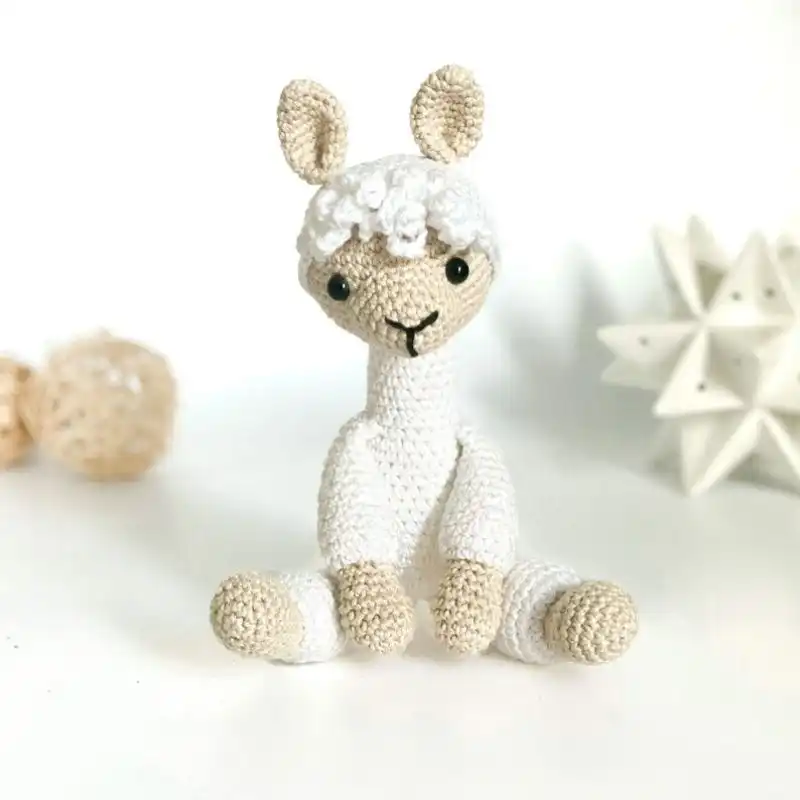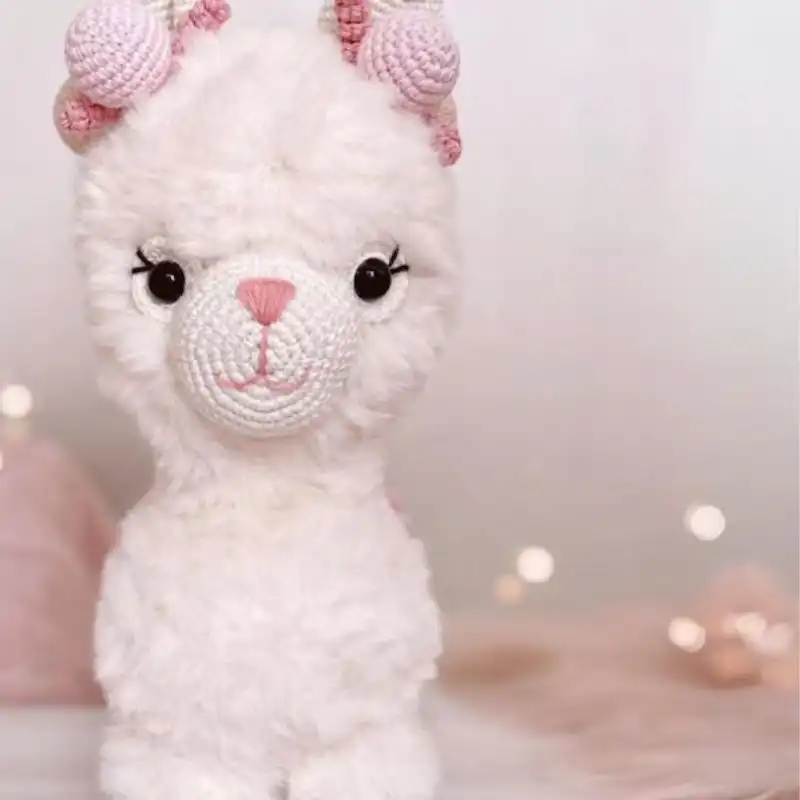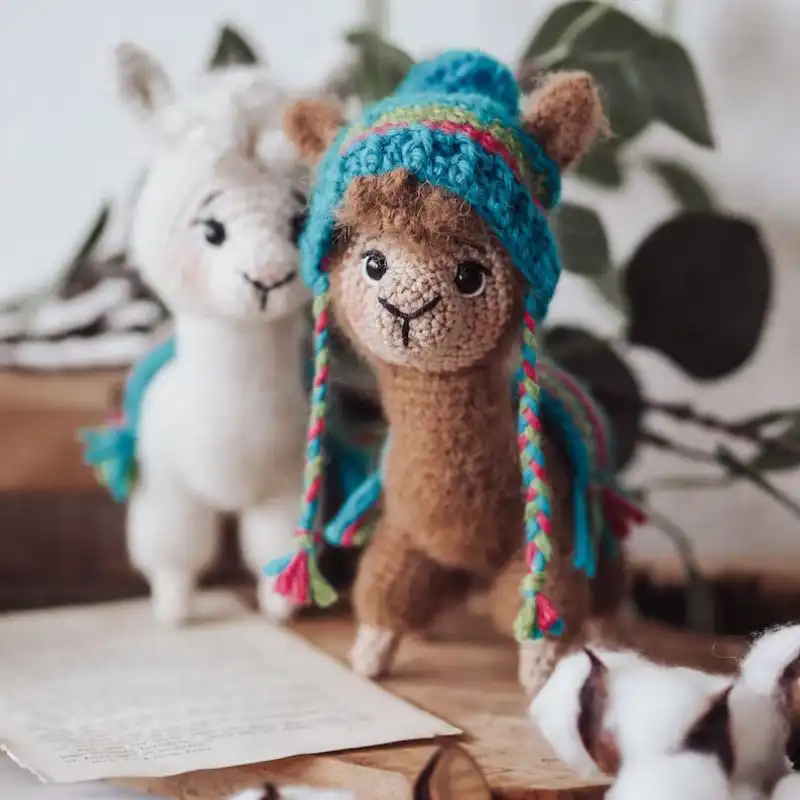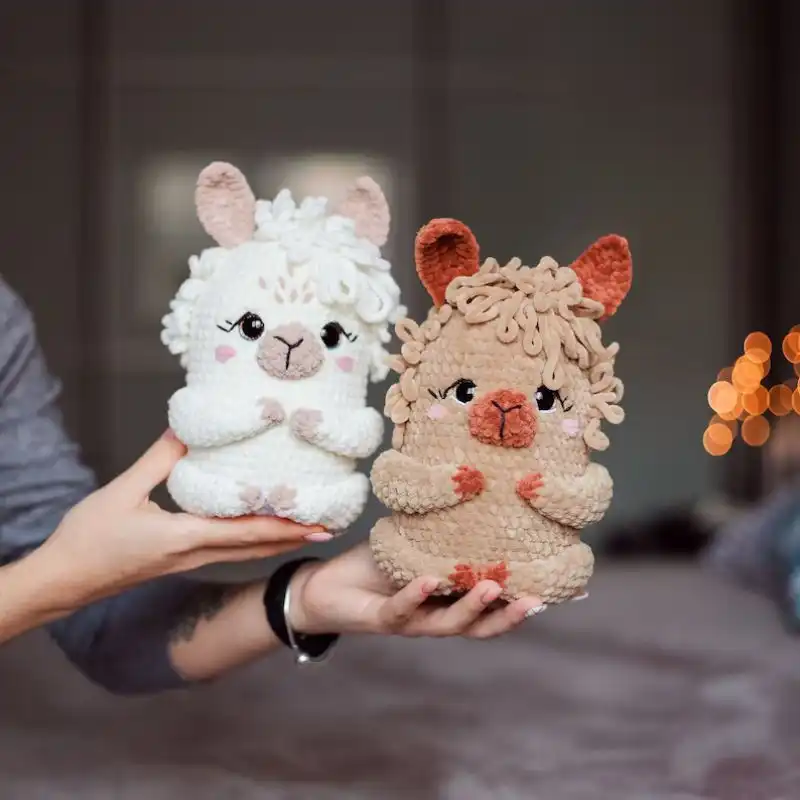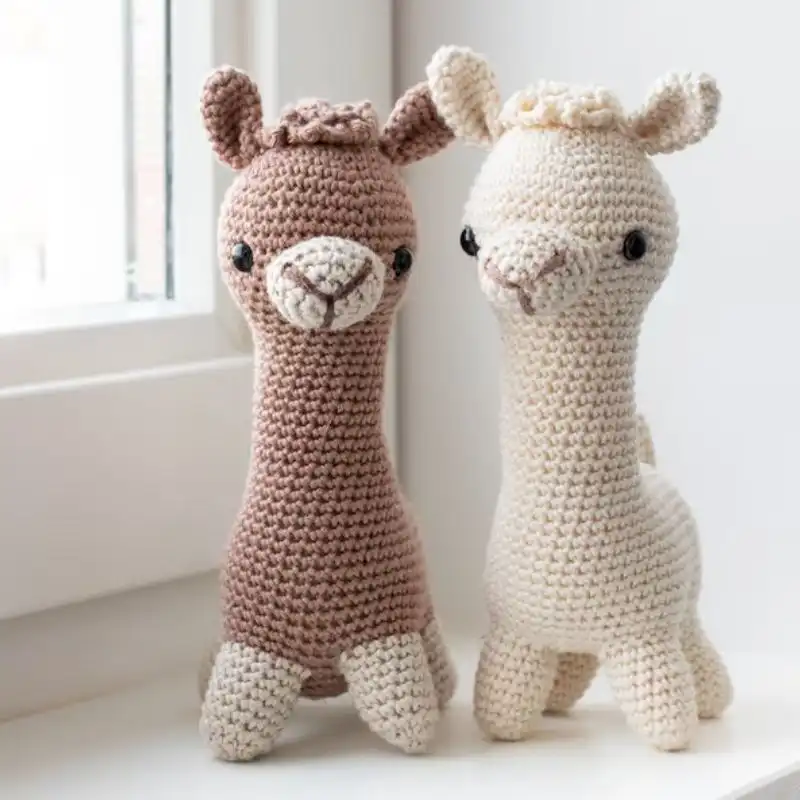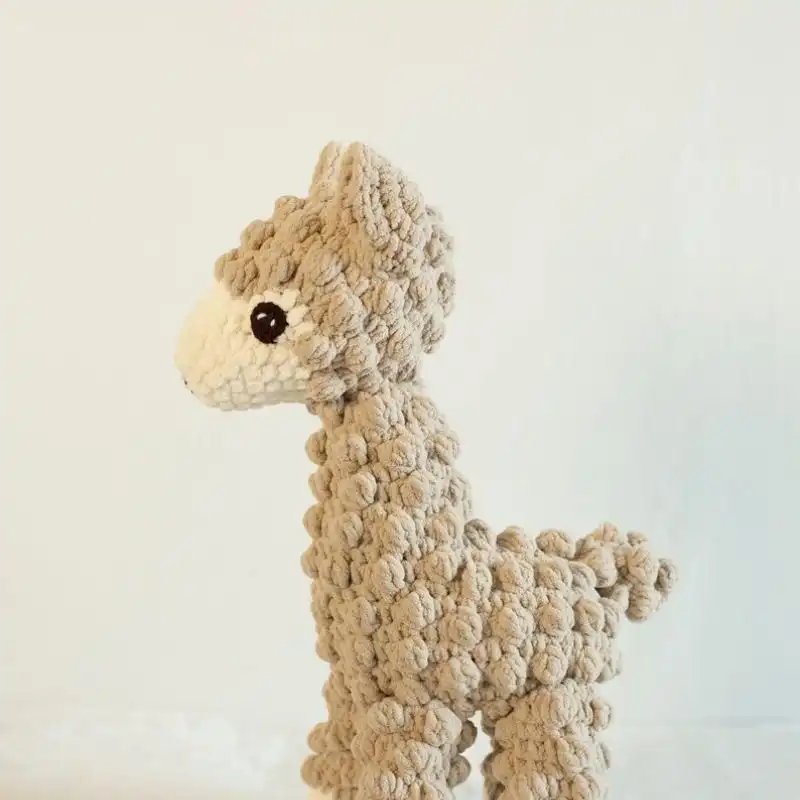Ever faced the dilemma of wanting to create something adorable and unique but not knowing where to start? Hi, I’m your go-to crochet expert, here to guide you through the whimsical world of Alpaca Amigurumi! Crocheting these cute creatures is a great way to express creativity and make personalized gifts, but it can often seem daunting to beginners.

Fear not! I’ve gathered 32 of the most charming Alpaca Amigurumi Crochet Patterns, ensuring your journey into the art of crochet is rewarding and fun.The solution is simple: dive into these patterns. They range from the easiest to the most intricate, catering to all skill levels.
It is an excellent opportunity to enhance your crochet skills and one of the best ways to create something extraordinary. Whether you want to make a personal gift or add a whimsical touch to your decor, these patterns are your best bet. In most cases, you need basic materials and a sprinkle of enthusiasm.
Let’s embark on this crochet adventure together, and I’ll show you how transforming yarn into adorable alpacas can be one of the simplest and most enjoyable crafting experiences!
Is It Worth To Crochet An Alpaca?
Crocheting an alpaca is undoubtedly worth it for both beginners and seasoned crafters. This project combines the joy of creating with the charm of a cuddly alpaca.
It’s not just about the end product; it’s a therapeutic journey, enhancing mindfulness and providing a sense of accomplishment. Alpaca amigurumi are soft and durable, perfect as cozy decor or heartfelt gifts.
They offer a great way to practice and refine various crochet techniques. Whether for personal satisfaction or as a unique gift, crocheting an alpaca is a delightful experience that adds a touch of whimsy to any crafter’s repertoire.
Various Stitches To Crochet An Alpaca
Crocheting an alpaca amigurumi involves using a variety of stitches, each contributing to the unique texture and shape of the finished creature. Here are some common stitches and their explanations:
- Chain Stitch (ch): This is the most basic crochet stitch, often used to begin projects. It creates a foundation chain from which other stitches are worked into.
- Slip stitch (sl st): Used to join stitches together without adding height, and it’s great for finishing off or joining parts of your alpaca.
- Single crochet (sc): A fundamental stitch that forms a tight, dense fabric. It’s used for most amigurumi, giving it structure and form.
- Half Double crochet (hdc): This stitch is slightly taller than a single crochet, adding more texture and thickness. It’s useful for parts of the alpaca that might need more bulk.
- Double Crochet (dc): Taller than hdc, it creates a looser and more open fabric. It can be used for larger alpacas to speed up the crocheting process.
- Magic Ring (also known as Magic Circle or Adjustable Ring): A technique used to start amigurumi projects, allowing you to crochet in the round. It’s perfect for starting the head or body of the alpaca, as it can be tightly closed to avoid holes.
- Increase (inc): Adding stitches to make the piece wider is essential for shaping the alpaca’s body and limbs.
- Decrease (dec): This stitch reduces the number of stitches used to taper or close up parts like the top of the head or ends of the limbs.
- Front Loop Only (FLO) and Back Loop Only (BLO): These techniques involve crocheting into only one stitch loop, creating a ridged texture. They can be used for decorative elements like the alpaca’s fur or facial features.
- Bobble Stitch: Creates a textured, raised spot on your crochet fabric, perfect for adding a unique touch to your alpaca, like making a snout or ears stand out.
The Ideal Size For Amigurumi Alpaca
When crafting amigurumi alpacas, size plays a crucial role in determining the charm and functionality of the finished product. Amigurumi alpacas can be made in various sizes, each serving different purposes and preferences:
- Miniature (About 2-4 inches): These tiny alpacas are perfect for keychains, charms, or small gifts. They require fine yarn and a smaller crochet hook, demanding more precision but resulting in adorable, pocket-sized creations.
- Small (About 5-8 inches): A popular choice for amigurumi, small-sized alpacas are large enough to showcase details and work well as children’s toys or desk companions. They balance between being manageable to make and substantial enough to cuddle.
- Medium (About 9-12 inches): Medium-sized alpacas offer a fuller, more huggable option. Ideal for display or as plush toys, they allow for more intricate details and can easily accessorize.
- Large (13 inches and above): Large amigurumi alpacas make excellent statement pieces for home decor or as unique gifts. They require more yarn and time but are impressive in their presence and impact.
The ideal size for an amigurumi alpaca largely depends on its intended use and the crocheter’s preference. The small to medium range (5-12 inches) is often preferred for a balance of detail, manageability, and versatility.
These sizes are large enough to be cuddly and showcase detailed work yet small enough to be portable and not too time-consuming.
This range also suits various yarn types and hook sizes, making it accessible for crocheters of all skill levels. Ultimately, the ideal size should align with the creator’s vision and the needs of the person who will appreciate the amigurumi alpaca.
Essential Tools And Materials
You’ll need a collection of essential tools and materials to crochet an amigurumi alpaca. Here’s a list to get you started:
- Yarn: The most crucial material. A soft, medium-weight yarn (like worsted weight) is ideal for alpacas. You can choose natural fibers like wool or cotton for a more authentic feel or synthetic yarns for durability and ease of care.
- Crochet Hook: The hook size should correspond to your yarn weight. Most medium-weight yarns commonly use a hook between 3.5mm and 5mm.
- Stitch Markers: These are crucial for keeping track of the beginning of rounds since amigurumi often works in continuous rounds without joining.
- Stuffing: Polyester fiberfill is commonly used for stuffing amigurumi to give it shape and softness. Make sure it’s hypoallergenic if the alpaca is intended for young children.
- Scissors: A sharp pair of scissors is essential for cutting yarn and trimming finished pieces.
- Yarn Needle (or Tapestry Needle): A large-eye needle is necessary for sewing parts together and weaving in ends.
- Safety Eyes: These give your amigurumi alpaca a lifelike look. Choose the size based on your alpaca’s scale. If the alpaca is for a child, consider embroidering the eyes for safety.
- Embroidery Floss: This adds facial features or other small details. Choose colors that contrast or complement your yarn.
- Ruler or Measuring Tape: Useful for measuring parts of your amigurumi to ensure they are the correct size.
- Pattern: A detailed pattern for an alpaca amigurumi is your blueprint. It will guide you through each process step, from starting chains to finishing touches.
Glossary Of Crochet Stitches And Techniques
Here’s a glossary of common crochet stitches and techniques that are fundamental in many projects, including amigurumi like an alpaca:
- Chain Stitch (ch): The basic foundation of most crochet projects, creating a series of looped stitches.
- Slip stitch (sl st): A method to join stitches together without adding height, used for finishing or joining rounds.
- Single crochet (sc): A basic stitch creates a tight, dense fabric.
- Half Double crochet (hdc): A stitch taller than a single crochet but shorter than a double crochet.
- Double Crochet (DC): A standard stitch twice the height of a single crochet.
- Treble Crochet (tr): A tall stitch that creates a more open and looser fabric.
- Magic Ring (or Magic Circle): A technique used to start projects worked in the round, allowing a tight center and adjustable size.
- Increase (inc): A method to add stitches, usually by making two stitches into one, for expanding the work.
- Decrease (dec): Combining stitches to reduce the total count used for shaping.
- Front Loop Only (FLO): Crocheting into only the front loop of a stitch for a ridged texture.
- Back Loop Only (BLO): Like FLO, crocheting into the back loop is often used for ribbing.
- Yarn Over (yo): Wrapping the yarn over the crochet hook is a fundamental part of creating stitches.
- Turning chain (tch): Chains made at the beginning of a row to bring the yarn up to the height needed for the next row.
- Fasten Off: Securing the last stitch in a piece when you have finished crocheting it.
- Weaving in Ends: Using a yarn needle to weave in loose yarn ends for a neat finish.
- Gauge: The number of stitches and rows per inch is vital for ensuring the project size is correct.
- Blocking: The process of wetting or steaming a finished crochet piece and pinning it into shape for a professional finish.
- Bobble Stitch: A textured stitch creating a raised bump, often used for decorative elements.
- Cluster Stitch: Several stitches worked together into the same stitch or space, creating a clustered effect.
- Popcorn Stitch: Similar to the bobble stitch, but completed by joining the first and last stitch of the bobble together.
- Shell Stitch: A series of stitches worked into the same space, creating a shell-like shape.
Understand Crochet Stitches & Techniques
As a seasoned crocheter, I’ve found that understanding crochet stitches and techniques is all about practice and patience. Start by familiarizing yourself with basic stitches like the chain, single crochet, and double crochet.
Use diagrams and video tutorials for visual guidance. It’s crucial to maintain consistent tension in your yarn for even stitches.
Practice each stitch repeatedly until it feels natural. Reading patterns can be challenging, but remember, they’re just a series of abbreviations and symbols.
Break them down step-by-step. Don’t rush; take your time to understand each technique. Remember, every expert was once a beginner, and with each stitch, you’re one step closer!
Which Yarn Is Best For Crochet Alpaca?
As an experienced crocheter, I’ve experimented with various yarns for creating the perfect amigurumi alpaca. Here’s my take on some options:
- Yarn: The most crucial material. A soft, medium-weight yarn (like worsted weight) is ideal for alpacas. You can choose natural fibers like wool or cotton for a more authentic feel or synthetic yarns for durability and ease of care.
- Crochet Hook: The hook size should correspond to your yarn weight. Most medium-weight yarns commonly use a hook between 3.5mm and 5mm.
- Stitch Markers: These are crucial for keeping track of the beginning of rounds since amigurumi often works in continuous rounds without joining.
- Stuffing: Polyester fiberfill is commonly used for stuffing amigurumi to give it shape and softness. Make sure it’s hypoallergenic if the alpaca is intended for young children.
- Scissors: A sharp pair of scissors is essential for cutting yarn and trimming finished pieces.
- Yarn Needle (or Tapestry Needle): A large-eye needle is necessary for sewing parts together and weaving in ends.
- Safety Eyes: These give your amigurumi alpaca a lifelike look. Choose the size based on your alpaca’s scale. If the alpaca is for a child, consider embroidering the eyes for safety.
- Embroidery Floss: This adds facial features or other small details. Choose colors that contrast or complement your yarn.
- Ruler or Measuring Tape: Useful for measuring parts of your amigurumi to ensure they are the correct size.
- Pattern: A detailed pattern for an alpaca amigurumi is your blueprint. It will guide you through each process step, from starting chains to finishing touches.
How Much Yarn Do I Need To Crochet An Alpaca?
As someone who frequently crochets amigurumi, including adorable alpacas, I’ve learned that estimating yarn needs can be pretty variable. For a standard-sized alpaca amigurumi (about 8 to 10 inches tall), you’ll typically need around 100 to 150 grams of medium-weight yarn (like worsted weight).
This estimation can change based on the pattern, crochet style, and hook size. You might use less yarn if your stitches are tighter, while looser stitches could require more.Always have a little extra yarn on hand than what the pattern suggests, especially if you’re planning to add detailed features or if the yarn is dyed in lots to ensure color consistency.
Adjust the yarn quantity accordingly if you’re making a smaller or larger alpaca. A small skein might suffice for miniature alpacas, but for larger, cuddlier versions, you might need several hundred grams. It’s always better to overestimate than to run out mid-project!
RELATED: 50 Halloween Costume And Decoration Crochet Patterns To Spookify Your Home
Is It Beginner Friendly?
From my experience, crocheting an alpaca can be beginner-friendly, depending on the pattern complexity. Simple alpaca patterns using basic stitches like single crochet, increases, and decreases are manageable for beginners. The key is to start with a straightforward design and use a detailed pattern that breaks down each step.
It’s also helpful to familiarize yourself with reading crochet patterns and understanding stitch abbreviations. While shaping and assembling the parts might require some practice, the process is enriching. So, with patience and practice, even a beginner can successfully create a charming crochet alpaca.
How To Crochet A Beginner-Friendly Alpaca?
Skill Level: Beginner
Materials
- Medium-weight yarn (like worsted weight)
- Crochet hook (size 3.5mm – 4.5mm)
- Safety eyes (6mm-9mm)
- Polyester fiberfill for stuffing
- Yarn needle
- Scissors
- Stitch markers
Step-by-Step Instructions
Start with a Magic Ring: Make a magic ring and work 6 single crochets (sc) into the ring. It starts the head or body of your alpaca.
Work in Rounds: Increase stitches in each round to gradually widen. For example, 2 sc in each stitch in the second round (12 stitches total), then in the first stitch, 2 in the next, repeating around for the third round (18 stitches), and so on.
Shape the Body and Head
- Continue increasing and then adding rounds without increasing to elongate the body.
- Typically, rounds of sc are followed by gradual decreases to shape the head.
Making the Legs
- Start each leg with a magic ring and work similarly to the body: start with 6 sc, then increase in the next round.
- Continue with a few rounds of straight sc to create the length of the legs.
- Stuff the legs lightly before finishing.
Create Ears and Tail
- Use smaller rounds or chains for ears, shaping them into pointed ovals.
- A small tuft or chain can serve as the tail.
Assemble Your Alpaca
- Sew the ears and tail to the body.
- Attach the legs at the bottom of the body.
Add Facial Features
- Insert safety eyes between the appropriate rounds (usually around the middle of the head).
- Use embroidery floss or yarn to stitch a nose and mouth.
Finishing Touches
- Weave in any loose ends.
- Optionally, add details like a small blanket or a bow to personalize your alpaca.
32 Amigurumi Alpaca Crochet Patterns
1. Miss Aviana The Alpaca
Introducing Miss Aviana, the elegant and charming alpaca, with the Miss Aviana The Alpaca crochet pattern. This sophisticated amigurumi design features a graceful alpaca with intricate details and a regal demeanor. Craft Miss Aviana to add a touch of elegance and character to your soft toy collection.
Suggested Yarn: Red Heart With Love
Difficulty Level: Intermediate
Yarn Weight: Aran (4)
Crochet Hook: 5.5 mm (I-9)
2. Bunny Rabbit And Alpaca Llama
Combine the cuteness of bunnies and the charm of alpacas with the Bunny Rabbit And Alpaca Llama crochet pattern. This delightful duo features an adorable alpaca and a bunny companion, creating a lovable pair that brings joy to your amigurumi collection.
Suggested Yarn: Red Heart Super Saver
Difficulty Level: Intermediate
Yarn Weight: Worsted
Crochet Hook: 4.0 mm (G)
3. Ata And Juanita Alpacas
Meet Ata and Juanita, the endearing alpaca duo with the Ata And Juanita Alpacas crochet pattern. This charming amigurumi design features two lovable alpacas with friendly expressions and delightful details. Craft Ata and Juanita to bring warmth and character to your handmade collection.
Suggested Yarn: Lion Brand Vanna's Choice
Difficulty Level: Intermediate
Yarn Weight: Medium (4)
Crochet Hook: 5.5 mm (I-9)
4. Violet The Alpaca
Meet Violet, the whimsical and endearing alpaca, with the Violet The Alpaca crochet pattern. This lovable amigurumi creation features a charming alpaca with a sweet expression and colorful details. Craft Violet to add a touch of playfulness to your crochet projects.
Suggested Yarn: Caron Simply Soft
Difficulty Level: Intermediate
Yarn Weight: Medium (4)
Crochet Hook: 5.5 mm (I-9)
5. Amigurumi Kawaii Alpaca
Dive into the world of kawaii with the Amigurumi Kawaii Alpaca crochet pattern. This cute and charming alpaca design showcases the essence of Japanese cuteness with its large, expressive eyes and small stature. Create an irresistibly adorable alpaca friend with this amigurumi pattern.
Suggested Yarn: Scheepjes Catona
Difficulty Level: Intermediate
Yarn Weight: Fingering (1)
Crochet Hook: 3.0 mm (C)
6. Crochet Alpaca Lama Plushie
Craft a plushie with personality using the Crochet Alpaca Lama Plushie pattern. This lovable design captures the notion of alpacas with its expressive face and huggable form. This alpaca plushie is a joy to create and cherish, whether as a cuddly friend or a charming decor piece.
Suggested Yarn: Lion Brand Vanna's Choice
Difficulty Level: Beginner
Yarn Weight: Medium (4)
Crochet Hook: 5.0 mm (H)
7. A Herd Of Alpacas
Bring a whole herd of alpacas to life with the A Herd Of Alpacas crochet pattern. This comprehensive design provides instructions to create multiple adorable alpacas, making it a perfect project for those looking to craft a playful and lively group of amigurumi friends.
Suggested Yarn: Paintbox Yarns Simply DK
Difficulty Level: Beginner
Yarn Weight: Light (3)
Crochet Hook: 4.0 mm (G)
8. Alpaca Wagon Hanger
Add a touch of creativity to your space with the Alpaca Wagon Hanger crochet pattern. This unique design features alpacas suspended from a wagon, creating a whimsical and decorative hanger. Craft this charming piece to infuse a sense of playfulness into your home decor.
Suggested Yarn: Red Heart Super Saver
Difficulty Level: Beginner
Yarn Weight: Worsted
Crochet Hook: 5.5 mm (I-9)
9. Mini Animals Alpaca
Explore the world of mini amigurumi with the Mini Animals Alpaca crochet pattern. This petite alpaca design allows you to create a collection of adorable mini alpacas, perfect for keychains, ornaments, or small gifts. Enjoy the fun of crafting these tiny treasures.
Suggested Yarn: Yarn Bee Soft Secret
Difficulty Level: Beginner
Yarn Weight: Aran (4)
Crochet Hook: 5.0 mm (H)
10. Fluffy Alpaca Amigurumi
Experience the softness of the Fluffy Alpaca Amigurumi crochet pattern. This design emphasizes alpaca fur’s luxurious and fluffy texture, creating a plush and cuddly amigurumi friend. Craft this delightful alpaca to add a touch of coziness to your crochet collection.
Suggested Yarn: Bernat Velvet
Difficulty Level: Intermediate
Yarn Weight: Bulky (5)
Crochet Hook: 6.5 mm (K)
11. Activity Cube Alpaca
Combine playfulness and functionality with the Activity Cube Alpaca crochet pattern. This unique design features an alpaca on each side of the cube, providing a multi-dimensional and interactive toy for little ones. Craft an engaging alpaca-themed activity cube for hours of fun.
Suggested Yarn: Lion Brand Pound of Love
Difficulty Level: Advanced
Yarn Weight: Worsted
Crochet Hook: 4.0 mm (G)
12. Anna The Alpaca
Meet Anna, the charming and friendly alpaca, with the Anna The Alpaca crochet pattern. This lovable amigurumi creation features a delightful alpaca with a sweet expression and vibrant details. Craft Anna to add a touch of warmth and character to your amigurumi collection.
Suggested Yarn: Paintbox Yarns Simply Aran
Difficulty Level: Beginner
Yarn Weight: Aran (4)
Crochet Hook: 5.0 mm (H)
13. Alpaca Amari
Experience the beauty of Amari, the Alpaca, with this crochet pattern. Amari’s intricate details and graceful demeanor make this amigurumi creation a unique and captivating addition to your crochet projects. Craft Amari to showcase the elegance of alpacas in your handmade collection.
Suggested Yarn: Red Heart With Love
Difficulty Level: Intermediate
Yarn Weight: Aran (4)
Crochet Hook: 5.5 mm (I-9)
14. Alpaca George Soccer Player
Combine sports and cuteness with the Alpaca George Soccer Player crochet pattern. This whimsical design features an alpaca engaged in the excitement of soccer, adding a playful and sporty twist to your amigurumi collection. Craft George for a unique and charming amigurumi experience.
Suggested Yarn: Lion Brand Vanna's Choice
Difficulty Level: Intermediate
Yarn Weight: Medium (4)
Crochet Hook: 4.0 mm (G)
15. Pink Maxi Alpaca
Infuse a touch of elegance with the Pink Maxi Alpaca crochet pattern. This design showcases the beauty of alpacas with a maxi-sized plushie featuring a lovely pink color. Craft this eye-catching alpaca for a standout and sophisticated addition to your amigurumi creations.
Suggested Yarn: Bernat Blanket Yarn
Difficulty Level: Beginner
Yarn Weight: Super Bulky
Crochet Hook: 9.0 mm (M/N)
16. Midi Alpaca
Discover the charm of the Midi Alpaca crochet pattern. This design offers a medium-sized amigurumi alpaca with a perfect balance of cuteness and huggability. Craft the Midi Alpaca for a delightful and manageable amigurumi project.
Suggested Yarn: Lion Brand Mandala
Difficulty Level: Intermediate
Yarn Weight: Light (3)
Crochet Hook: 4.0 mm (G)
17. Al The Alpaca
Meet Al, the endearing and lovable alpaca, with the Al The Alpaca crochet pattern. This amigurumi design features a charming alpaca with a friendly expression and cozy details. Craft Al to bring warmth and joy to your handmade creations.
Suggested Yarn: Scheepjes Softfun
Difficulty Level: Advanced
Yarn Weight: Sport (2)
Crochet Hook: 3.5 mm (E)
18. Little Alpaca
Experience the charm of the Little Alpaca crochet pattern. This petite amigurumi design showcases the cuteness of alpacas in a small and manageable size. Craft this little alpaca for a quick and delightful addition to your soft toy collection.
Suggested Yarn: Yarn Bee Soft & Sleek Chunky
Difficulty Level: Beginner
Yarn Weight: Bulky (5)
Crochet Hook: 6.0 mm (J)
19. Chubby Alpaca
Celebrate the round and cuddly charm of the Chubby Alpaca crochet pattern. This amigurumi design emphasizes the adorable plumpness of alpacas, creating a lovable and huggable companion. Craft this chubby alpaca for a delightful addition to your soft toy collection.
Suggested Yarn: Lion Brand Vanna's Choice
Difficulty Level: Intermediate
Yarn Weight: Medium (4)
Crochet Hook: 5.0 mm (H)
20. Christmas Alpaca
Infuse the festive spirit into your crafting with the Christmas Alpaca crochet pattern. This holiday-themed amigurumi design features an alpaca ready for Christmas celebrations. Whether as a decor piece or a charming gift, this Christmas alpaca brings joy and merriment to your crochet projects.
Suggested Yarn: Red Heart Super Saver
Difficulty Level: Beginner
Yarn Weight: Worsted
Crochet Hook: 5.5 mm (I-9)
21. Mexican Alpaca Gnome
Explore cultural flair with the Mexican Alpaca Gnome crochet pattern. This imaginative design combines the notion of a gnome with the charm of an alpaca, creating a unique and culturally inspired amigurumi. Craft this delightful gnome alpaca for a one-of-a-kind addition to your handmade creations.
Suggested Yarn: Bernat Super Value
Difficulty Level: Intermediate
Yarn Weight: Worsted
Crochet Hook: 4.0 mm (G)
22. Easy Alpaca
Dive into the world of amigurumi with the Easy Alpaca crochet pattern. This design offers a simplified approach to crafting a charming alpaca, perfect for beginners. Enjoy creating a cute and uncomplicated amigurumi friend with this easy-to-follow pattern.
Suggested Yarn: Lion Brand Wool-Ease Thick & Quick
Difficulty Level: Beginner
Yarn Weight: Super Bulky
Crochet Hook: 9.0 mm (M/N)
23. Doris The Alpaca
Meet Doris, the sweet and endearing alpaca, with the Doris The Alpaca crochet pattern. This lovable amigurumi design features a charming alpaca with a friendly expression and delightful details. Craft Doris to add a touch of warmth and character to your handmade collection.
Suggested Yarn: Yarn Bee Soft & Sleek Chunky
Difficulty Level: Beginner
Yarn Weight: Bulky (5)
Crochet Hook: 6.0 mm (J)
24. Alpaca Ronaldo
Celebrate the playful spirit of soccer with Alpaca Ronaldo, a crochet pattern that combines the charm of alpacas with the excitement of the sport. This sporty amigurumi design is perfect for soccer enthusiasts and adds a playful twist to your handmade creations.
Suggested Yarn: Red Heart Super Saver
Difficulty Level: Intermediate
Yarn Weight: Worsted
Crochet Hook: 5.0 mm (H)
25. Lama Alpaca
Explore the world of puns with the Lama Alpaca crochet pattern. This playful design combines the charm of alpacas with a playful play on words. Craft this whimsical amigurumi for a lighthearted and amusing addition to your soft toy collection.
Suggested Yarn: Lion Brand Vanna's Choice
Difficulty Level: Intermediate
Yarn Weight: Medium (4)
Crochet Hook: 5.5 mm (I-9)
26. Plush Mini Alpaca
Delight in the cuteness of mini amigurumi with the Plush Mini Alpaca crochet pattern. This petite design allows you to create a tiny and adorable alpaca, perfect for keychains, ornaments, or a charming addition to your miniature crochet projects.
Suggested Yarn: Bernat Blanket Yarn
Difficulty Level: Beginner
Yarn Weight: Super Bulky
Crochet Hook: 6.5 mm (K)
27. Alpaca Onesiegurumi
Combine coziness with cuteness with the Alpaca Onesiegurumi crochet pattern. This playful design features an alpaca wearing a onesie, creating a charming and whimsical amigurumi. Craft this adorable onesiegurumi for a soft and huggable addition to your handmade creations.
Suggested Yarn: Caron Simply Soft
Difficulty Level: Intermediate
Yarn Weight: Medium (4)
Crochet Hook: 5.0 mm (H)
28. Llama Alpaca Pillow
Bring comfort and style to your living space with the Llama Alpaca Pillow crochet pattern. This creative design transforms the charm of an alpaca into a cozy and decorative pillow. With its unique shape and vibrant colors, this alpaca pillow is a delightful addition to any room.
Suggested Yarn: Stylecraft Special DK
Difficulty Level: Advanced
Yarn Weight: Light (3)
Crochet Hook: 4.0 mm (G)
29. Bobble Stitch Alpaca
Elevate your crochet skills with the Bobble Stitch Alpaca pattern. This design showcases the textured beauty of bobble stitches, creating a visually exciting and charming amigurumi. Craft this bobble stitch alpaca for a unique and eye-catching addition to your handmade collection.
Suggested Yarn: Scheepjes Catona
Difficulty Level: Intermediate
Yarn Weight: Fingering (1)
Crochet Hook: 3.5 mm (E)
30. Alpaca Paco
Meet Paco, the whimsical and charming alpaca, with the Alpaca Paco crochet pattern. This delightful amigurumi design features a lovable alpaca with a playful expression and vibrant details. Craft Paco to add a touch of joy and character to your soft toy collection.
Suggested Yarn: Lion Brand Vanna's Choice
Difficulty Level: Beginner
Yarn Weight: Medium (4)
Crochet Hook: 5.0 mm (H)
31. Realistic Alpaca Llama
Capture the beauty of nature with the Realistic Alpaca Llama crochet pattern. This design aims for a lifelike representation, featuring detailed features and a natural color palette. Create a crochet alpaca that mirrors the elegance of its real-life counterpart.
Suggested Yarn: Scheepjes Stonewashed
Difficulty Level: Advanced
Yarn Weight: Sport (2)
Crochet Hook: 3.5 mm (E)
32. Ruiz & Lucia The Alpacas With Balloons
Celebrate joy and festivity with Ruiz and Lucia, The Alpacas With Balloons crochet pattern. This whimsical design features two alpacas adorned with balloons, creating a playful and charming amigurumi. Craft this festive duo for a delightful addition to your handmade creations.
Suggested Yarn: Paintbox Yarns Simply Aran
Difficulty Level: Intermediate
Yarn Weight: Aran (4)
Crochet Hook: 5.0 mm (H)
Do’s & Don’ts To Crochet A Safe Alpaca
Do’s
- Choose the Right Yarn: Opt for soft, hypoallergenic yarns like cotton or bamboo. Avoid wool if allergy concerns exist.
- Tight Stitches: Crochet tightly to ensure the stuffing doesn’t come out, which could be a choking hazard.
- Safe Stuffing: Use hypoallergenic, washable stuffing to keep the toy hygienic and safe.
- Secure Attachments: Ensure all parts (ears, legs, tail) are securely attached to withstand curious and playful baby hands.
- Embroidered Features: Instead of using safety eyes or buttons, embroider the eyes and mouth to eliminate choking hazards.
- Washable: Ensure the finished toy can be easily washed to maintain hygiene.
- No Loose Threads or Accessories: Avoid adding small, detachable accessories or decorations.
- Test Durability: Give the alpaca a gentle tug test to ensure everything is secure.
Don’ts
- Avoid Small Parts: Do not use safety eyes, buttons, or beads, which can be choking hazards for babies.
- Don’t Use Harsh Yarns: Avoid scratchy or stiff yarns that might irritate delicate skin.
- Avoid Fragile Decorations: Steer clear of decorations like ribbons or bells that can be pulled off and potentially swallowed.
- Don’t Use Thin Yarn for Stuffing: Using yarn scraps for stuffing can create lumps and complex areas, which aren’t ideal for cuddly toys.
- Avoid Loose Stitching: Loose stitches can create gaps through which stuffing might spill out, posing a risk.
- Don’t Forget to Pre-Wash the Yarn: Pre-wash the yarn to remove any residues or dye that might cause irritation.
- Don’t Compromise on Quality: Always use high-quality materials for yarn and stuffing to ensure durability and safety.
Tips & Tricks To Avoid Crochet Mistakes
Creating a perfect crochet alpaca requires attention to detail and some know-how. Here are some tips and tricks to help avoid common crochet mistakes:
- Consistent Tension: Maintaining even tension throughout your project is crucial for uniform stitches. Your alpaca may have uneven sides or deformed parts if your tension varies.
- Count Your Stitches: It’s easy to lose count, especially when working in rounds. Use stitch markers at the beginning of each round and count regularly to ensure you’re on track.
- Read the pattern Thoroughly: Before you start, read through the entire pattern. Understanding the full scope of the project helps prevent surprises and mistakes.
- Use the Right Hook Size: The hook size can significantly impact the size and look of your stitches. Try adjusting the hook size if your stitches are too tight or loose.
- Practice New Stitches First: If the pattern includes unfamiliar stitches, practice them separately before incorporating them into your project.
- Stuff Evenly: When stuffing your alpaca, ensure the stuffing is even and smooth. Overstuffing can distort the shape, while understuffing might make it too floppy.
- Secure Finishing: When sewing parts together, ensure they’re attached securely, primarily if the alpaca is meant for children.
- Take Breaks: Crocheting for long periods can lead to hand fatigue, affecting tension and concentration. Take regular breaks to rest your hands.
- Fix Mistakes Promptly: If you notice a mistake, it’s better to unravel and fix it immediately rather than hoping it won’t be noticeable in the finished product.
- Keep Yarn in Good Condition: Avoid tangling and fraying by keeping your yarn in a yarn bowl or bag while working.
- Photograph Your Progress: Sometimes, photographing your work can help spot irregularities or mistakes you might not see otherwise.
- Stay Organized: Keep your working space tidy and your tools organized. This way, you can easily find what you need and avoid mishaps.
- Trial and Error: Be bold, experiment, and learn from each project. Each mistake is an opportunity to improve your skill.
How To Block The Crochet Alpaca?
Blocking a crochet alpaca is essential to give your finished project a professional, polished look. Here’s how you can do it:
Materials Needed
- Blocking board or foam mat
- Rust-proof pins
- Spray bottle with water or a steam iron
- Towel (if using steam)
Step-by-Step Instructions
Prepare the Blocking Surface: Lay out your blocking board or foam mat if you don’t have one, any flat, water-resistant surface works, like a mattress or layered towels.
Pin the Alpaca
- Spread your crochet alpaca flat on the surface.
- Gently shape it to the desired form.
- Pin it in place, starting from the center and working your way out.
- Be careful not to stretch it too much, just enough to eliminate any inconsistencies.
Wet or Steam Block
- Wet Blocking: Fill a spray bottle with water and lightly mist your alpaca until damp but not soaking wet.
- Steam Blocking: Set your iron to a steam setting suitable for the yarn material. Hover the iron above the alpaca without touching it, allowing steam to penetrate the fibers. If your iron doesn’t have a steam function, place a damp towel over the alpaca and press lightly with the iron.
Allow to Dry: Leave your alpaca pinned until it’s scorched. Depending on the yarn and ambient conditions, it could take several hours to a full day.
Remove Pins and Finish: Once dry, carefully remove the pins. Your crochet alpaca should now hold its blocked shape, with cleaner edges and a more professional appearance.
Additional Tips
- Always check the yarn label for washing and ironing instructions to avoid damaging the fibers.
- For acrylic yarns, wet blocking is preferred as excessive heat can ‘kill’ the yarn (make it permanently limp).
- If your alpaca is a blend of fibers, treat it according to the most delicate fiber in the mix.
Suggestions To Add Style & Personal Touch
Adding style and a personal touch to your crochet alpaca can transform it from a simple craft project into a unique and cherished item. Here are various suggestions to infuse personality into your alpaca:
- Choose Unique Colors: Instead of sticking to traditional alpaca colors, get creative. Use bright or unusual colors for a fun twist, or try a gradient yarn for a unique effect.
- Accessorize: Add accessories like a tiny scarf, a hat, or a bow. You can even crochet these extras in coordinating or contrasting colors.
- Embroider Details: Beyond the basic facial features, add embroidered details like flowers, hearts, or patterns on the body for a decorative touch.
- Texture with Yarns: Use different types of yarns to add texture. For instance, a fluffy yarn for the head and tail can make your alpaca look more realistic.
- Customize the Size: Alter the pattern to make your alpaca larger or smaller. A tiny alpaca could be a cute keychain, while a larger one could be a cuddly companion.
- Add Sounds: For a baby’s toy, insert a rattle or a squeaker inside the alpaca.
- Change the Expression: Small changes in the placement of eyes or the shape of the mouth can give your alpaca a whole new expression, from happy and smiling to sleepy or surprised.
- Interactive Elements: Incorporate elements like movable legs or a head that turns.
- Personalized Tags or Labels: Adding a custom tag or label with a name or special message can personalize the alpaca for gift-giving.
- Crochet Patterns or Motifs: Integrate crochet patterns or motifs into the alpaca’s body, like stripes, polka dots, or stars.
- Add a Companion: Crochet a mini companion for your alpaca, like a baby alpaca or a favorite food item.
- Experiment with Embellishments: Attach beads, buttons, or fabric patches for extra flair, keeping in mind safety if the alpaca is for a young child.
- Felted Features: Try felting parts of the alpaca, like the ears or nose, for a different texture.
- Use Variegated Yarn: This yarn automatically creates a multi-colored effect, making each stitch look unique.
- Mix Crochet Techniques: Combine standard crochet with Tunisian or amigurumi techniques for a varied texture.
Wash & Care Instructions
Proper wash and care are essential to ensure your crochet alpaca retains its charm and durability over time. Here are instructions to help you maintain your handmade creation:
Check the Yarn Label: Before washing, always refer to the yarn label for specific care instructions. Different fibers have different requirements.
Hand Wash for Safety: Gently hand wash your alpaca in lukewarm water. Use a mild detergent suitable for delicate fabrics. Avoid using bleach or harsh chemicals.
Spot Cleaning: For minor stains or spots, use a damp cloth and gently dab the area without rubbing harshly.
Avoid Twisting or Wringing: Do not twist or wring the alpaca to prevent distortion. Press the excess water with your hands or between two towels.
Dry Carefully:
- Lay the alpaca flat on a clean, dry towel.
- Reshape it as needed and let it air dry away from direct sunlight or heat sources.
- Avoid using a tumble dryer, as the heat can damage the fibers or the shape of the alpaca.
Fluff and Reshape: Once dry, fluff up the alpaca and reshape it gently with your hands. It helps in retaining its original form.
Avoiding Pilling: Some yarns may pill with use. Use a fabric shaver or a lint remover gently over the surface to remove any pills.
Storage:
- Store your crochet alpaca in a cool, dry place.
- Avoid storing in plastic bags as this can trap moisture and cause mildew.
- Use breathable fabric bags if needed.
Dealing with Odors: If the alpaca has absorbed odors, you can sprinkle it with baking soda, leave it for an hour, and then gently shake or vacuum it off.
Regular Dusting: Regularly dust off your crochet alpaca with a soft brush to prevent dust accumulation, primarily if used as a decorative item.

A Quick Recap
This article provides a comprehensive guide to creating a crochet alpaca, ideal for beginners and experienced crafters alike. It covers essential tools and materials, including the selection of suitable yarn and the importance of the correct hook size.
Step-by-step instructions for crafting an alpaca, including stitch techniques and assembly advice, are detailed. Tips for personalizing your alpaca with unique colors, textures, and accessories are offered to add charm.
Furthermore, the article addresses the significance of proper care and washing to ensure the longevity and durability of your handmade alpaca, making it a cherished item for years to come.
Frequently Asked Questions
Where Was Amigurumi Created?
Amigurumi is a term coined entirely within Japan, with no history of the word in the West until its conception in the East.
What Is The History Of Amigurumi?
Although knitting and crochet are not native to Japan, samurai warriors adapted the craft to knitting socks with built-in toes for better movement. Amigurumi developed naturally with the introduction of knitting and crochet.
What Sort Of Crochet Is Used For Amigurumi?
The most appropriate crochet stitch for amigurumi is the single crochet stitch due to the tightness of the stitch, which leads to the fabric becoming denser with as few gaps as possible. It is beneficial for dolls, which amigurumi is predominately used to make.
Is It Difficult To Attach The Limbs And Head To The Body?
It can be tricky for beginners but becomes easier with practice. Use a yarn needle to sew the parts, ensuring they’re aligned and securely attached.
How Do I Make My Crochet Alpaca Stand Upright?
Ensuring the legs are evenly stuffed and securely attached is vital. You can insert wire or pipe cleaners into the legs for added stability, but this is not recommended for toys intended for young children.
What Should I Do If I Find A Mistake In My Crochet Alpaca?
If you spot a mistake, it’s best to return to where the error occurred and redo it. Although time-consuming, this ensures your finished project looks its best.
Are There Any Specific Stitches I Should Learn Before Starting An Alpaca Project?
Familiarity with basic stitches like single crochet, slip stitch, and increases/decreases is essential. Some patterns may also require more advanced stitches, so reviewing the pattern’s requirements beforehand is helpful.
- 25 Delightful Crochet Jellyfish Patterns For Sea Lovers - April 17, 2024
- 75 Free Lovely Crochet Sweater Patterns (With Pictures) - February 9, 2024
- 50 Free Crochet Blanket Patterns For A Cozy Home - January 22, 2024





